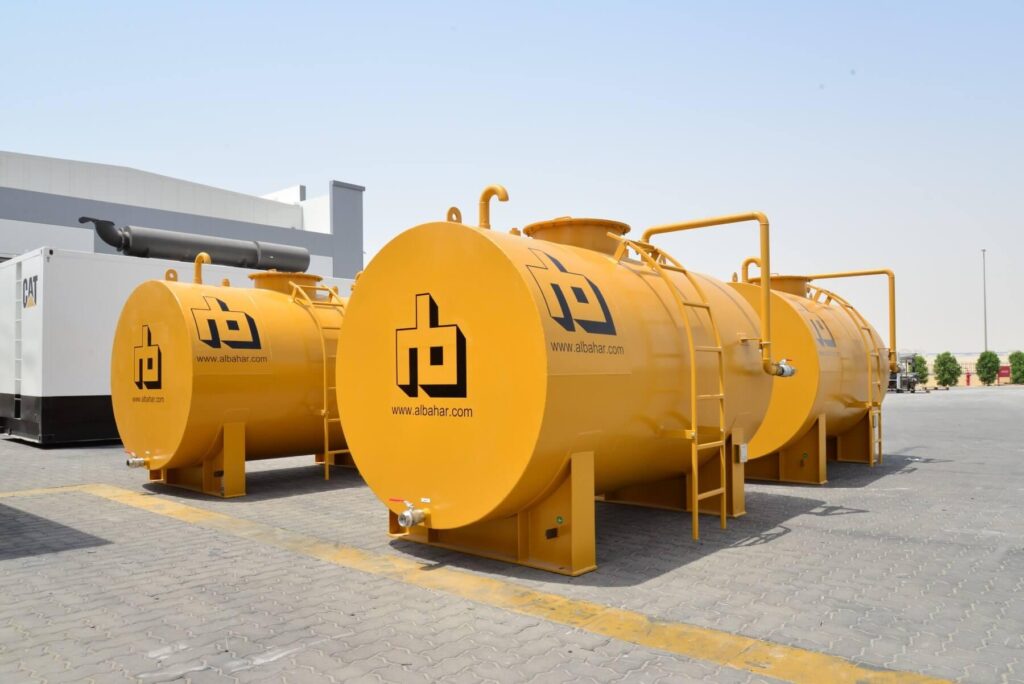Fuel storage tanks are critical components in a wide range of industries, from energy and transportation to manufacturing and agriculture. Proper design is essential not only for safety and environmental protection but also for operational efficiency and cost-effectiveness. This blog delves into the key principles and best practices for design of fuel storage tanks, offering a comprehensive guide for engineers, project managers, and industry professionals.
Understanding the Basics
Before diving into the specifics of design, it’s important to understand the fundamental types of fuel storage tanks. Generally, these can be categorized into two main types:
- Aboveground Storage Tanks (ASTs): These are installed on the surface and are often used for convenience and easy access. They are commonly found in fueling stations and industrial sites.
- Underground Storage Tanks (USTs): These tanks are buried below the ground and are frequently used for bulk fuel storage at sites with limited space or where aesthetics are a concern.
Each type has its own set of design considerations, but both require adherence to stringent safety and environmental standards.
Key Design Considerations
Capacity and Sizing
The size of the tank is a primary consideration, determined by factors such as the volume of fuel to be stored, anticipated consumption rates, and available space. A well-designed tank should provide adequate capacity while avoiding excessive space that could lead to inefficient operations. Engineers often use software tools to model different scenarios and determine the optimal size.
Material Selection
The choice of materials for fuel storage tanks is crucial. Tanks are typically made from materials such as steel, aluminium, or composite materials, depending on the type of fuel and environmental conditions. For instance, steel is often used for its strength and durability, but it must be treated to resist corrosion. Composite materials may be used for their resistance to a wider range of chemicals and their lighter weight.
Corrosion Protection
Corrosion is a significant concern, especially for tanks exposed to environmental elements. Different methods of corrosion protection are employed, such as coating the tank with anti-corrosive substances, using cathodic protection systems, and employing corrosion-resistant materials. Regular maintenance and inspection are also crucial to ensure the integrity of the tank over time.
Leak Detection and Prevention
Preventing and detecting leaks is paramount to avoiding environmental contamination and ensuring safety. Modern tanks are equipped with leak detection systems that use sensors and alarms to monitor for any signs of leakage. Double-walled tanks, with an outer layer providing an additional barrier, are commonly used to enhance leak prevention.
Regulatory Compliance
Fuel storage tank design must comply with various regulations and standards set by local, national, and international bodies. These regulations cover aspects such as tank construction, installation, maintenance, and emergency response plans. Ensuring compliance not only avoids legal issues but also helps in maintaining safety and environmental standards.
Fire Safety and Ventilation
Given the flammable nature of fuel, fire safety is a critical consideration. Tanks must be designed with appropriate fire protection systems, including fire-resistant materials, proper spacing, and emergency shut-off mechanisms. Ventilation is also important to prevent the accumulation of explosive vapours and to maintain safe pressure levels inside the tank.
Environmental Impact
Minimizing the environmental impact is a key consideration in tank design. This includes not only preventing leaks and spills but also managing runoff and ensuring that the tank does not negatively affect surrounding ecosystems. Environmental impact assessments may be required as part of the design process.
Accessibility and Maintenance
Designing tanks with accessibility in mind ensures that maintenance and inspections can be carried out efficiently. This involves incorporating features such as inspection ports, access ladders, and easy-to-remove covers. Regular maintenance is essential to identify and address potential issues before they become major problems.
Integration with Other Systems
Fuel storage tanks are often part of a larger system that includes pumps, filters, and distribution networks. The design of the tank should consider how it will integrate with these other components to ensure smooth operation and efficiency. Proper alignment with the entire system helps in reducing operational disruptions and optimizing performance.
Emerging Trends and Technologies
Advancements in technology are continually shaping the design of fuel storage tanks. Innovations such as smart sensors, advanced materials, and automated monitoring systems are enhancing the safety, efficiency, and environmental friendliness of fuel storage. Embracing these technologies can lead to more effective management and operation of fuel storage facilities.
Conclusion
Designing fuel storage tanks involves a complex interplay of factors ranging from material selection and capacity planning to safety and environmental considerations. By adhering to best practices and staying abreast of technological advancements, professionals can ensure that their fuel storage systems are both safe and efficient. As the industry continues to evolve, keeping up with emerging trends and regulatory changes will be key to successful tank design and operation.
This guide provides a foundational understanding of the essential principles in fuel storage tank design. Whether you are an engineer, project manager, or industry stakeholder, applying these principles will help you achieve optimal performance and safety in your fuel storage solutions.






More Stories
1win Скачать На Андроид Бесплатное Приложение пиппардом Официального Сайт
Navigating the Dangers of Card Scam Fees: Awareness and Action Steps
99Based® || 99 Based Bekleidungsverkauf